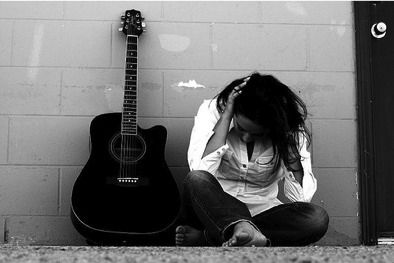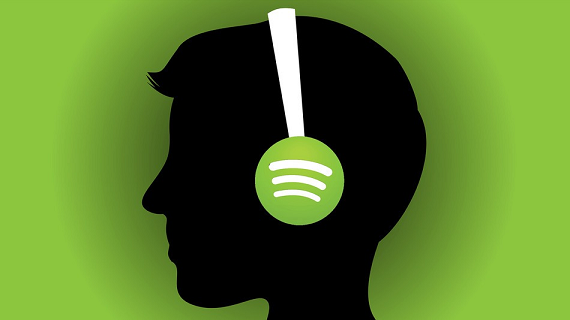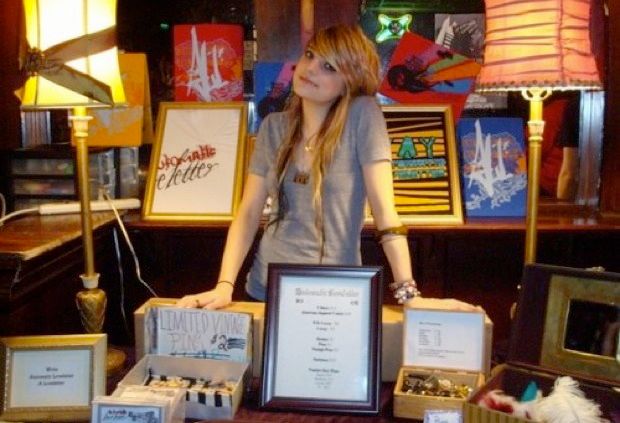Your Favorite Indie Artists are Getting Screwed Over

Let’s say your taste in music is a bit left of center. Sure, you like some popular artists, but most of your favorites fly a little under the radar. You stream their albums on Spotify, put them in your playlists, and even share those playlists with your friends.
You probably think – “I’m doing my part to help support my favorite indie artists.”
In a just world, that would be the case. Unfortunately, as recording artist and musician’s advocate Blake Morgan explains, “The people you’re listening to are not the people getting your money.”
Poisoned Stream
Morgan, who founded the #IRespectMusic campaign, the goal of which is to help artists receive their fair share of earnings from airplay, has gone toe to toe with Spotify regarding their model for paying artists.
“All the streaming companies use a pool model for their money. They don’t use a listener model,” he explains. “A listener model would mean $7 out of my $10 subscription – that $7 should go to the artists I listen to … What ends up happening is my $7 gets put in a pool, and then divided by the amount of total streams, and who got what percentage of that amount.”
Sound confusing? That’s probably intentional, because how those percentages break down is jarring.
“90% of the revenue in streaming goes to 1% of the artists, which means 99% of the artists in the world are sharing 10%, and there’s no way to get above that, ever.”
This means for Morgan, and the many indie artists like him, “If you listen to my music on Apple, or Spotify, Beyonce is getting more money from you streaming my music than I’m getting from you streaming my music.”

Morgan adds, “I don’t begrudge Beyonce all of the money she has, she deserves it from the people listening to her music.” The key part of that sentence is – from the people listening to her music. In a reverse Robin Hood ideology, streaming services are funneling the majority of the money earned by indie acts to artists like Beyonce, and her top 1% contemporaries.
If this continues it could eliminate an entire community of artists from the music world.
The Shrinking Middle Class in Music
When indie artists are trying to develop a career, every penny – or in the case of streaming, every fraction of a penny – counts, so when streaming services disproportionately divvy up earnings it has a ripple effect throughout music.
Morgan sees this on a daily basis. “The middle class of the music world, just like the middle class everywhere else, is being fundamentally destroyed and undermined.”
Using statistics from the previous year, he estimates it took artists around 380,000 streams per month just to earn the U.S. minimum wage.
Zoe Keating, like many other artists at the end of 2018, posted her year-end Spotify statistics, but unlike other artists, she also pulled back the curtain, and shared how much her streams actually netted her.
In 2018 my music was listened to on Spotify for 190k hours by 241,631 people. Those 2,252,293 streams netted me $12,231, which is 39.2% of my annual rent. If you love the music please consider going to a show or supporting my work directly at https://t.co/M2SYqTzNCu. Thank you! pic.twitter.com/2V6gaAE80O
— Zoe Keating (@zoecello) December 14, 2018
Over 2.25 million listens resulted in only a little over $12k in funds.
This kind of “steal from the poor to give to the rich” revenue sharing makes it impossible for indie artists to climb the proverbial ladder, because, continuing the metaphor, the ladder is missing all of its middle rungs. Either you’re already at the top, or you’re among the glut at the bottom desperately searching for a musical grappling hook that will help you ascend past the giant void.
Morgan points out the ladder previously had all of those middle rungs, noting that back in the day, “If we start a band, (let’s say) we’re 18 years old, we can sell 1,000 albums, that’s $10k bucks, we can buy a van now. You can build on it.” In the present, however, with the way streaming is currently set up, he laments, “There’s no way to build a middle class in this economy.”
2,000,000 vs. 1,000
Morgan’s hypothetical band building exercise begs the question – what’s easier for an artist, getting 2 million people to stream their music, or getting 1,000 people to buy their album?
While everyone says “nobody buys albums anymore,” there’s still a market for CDs, vinyl, and even cassettes, albeit a niche one. If an artist can find that market for their own work, and focus their efforts there, it could reap far greater benefits for them, at least in the short term.
While everyone was posting their year-end Spotify numbers on Twitter, indie hip-hop legend J-Zone spoke up about the idea of sales vs. streams, saying
Selling 500 copies of a 7" record pays what close to a million Spotify plays pays. Nobody's bragging about selling 500 units. Numbers, popularity, income...lines are blurry & it's up to the individual what success is. Make music you wanna make & let the rest of the bullshit go
— J-Zone (The Du-Rites) (@jzonedonttweet) December 10, 2018
In a reply to this, hip-hop DJ and producer ChumZilla added
Damn near 100% of my recoups from my bandcamp and hand to hand
— Chum Zilla (@ChumZilla) December 10, 2018
Those tweets, and Morgan’s example of how to grow as a band in the days before streaming, led me to think about a panel discussion I moderated a handful of years ago that included SpaceLAB Recordings founder Jake Palumbo, who has been successfully rowing his way through the murky indie music waters for well over a decade. During the panel discussion he’d mentioned 500 being a magic number for indie artists.
Following up with him in the present, he reiterated that the number represented how many fans an indie artist would need to survive. “The notion was a true fan, or hardcore fan, being someone who copped all your product for the year – i.e. at minimum a CD, t-shirt, and concert ticket.”
He notes that as the years have gone by, the break-even point has gone up, but is still, ultimately, reasonable. “If you can get approximately 1,000 people to spend $40-$50 a year on you, you can earn $40k-$50k a year before taxes.”
With that in mind, can bands still grow the old fashioned way?
Solutions for Helping Indie Artists in a Streaming World
If you’re a fan, and you’re paying $10 a month for a streaming service, consider bumping it down to a free, ad-supported version, and using that $120 per year to purchase music, t-shirts, and concert tickets, from your favorite indie artists.
I know it may seem like an antiquated notion to buy an album, but this is where the artists come in – if artists can shift some of their focus from streaming, to selling, they can incentivize buying products by offering autographed CDs/posters, merch bundles, etc.

Palumbo also advises artists be diligent about making sure they receive the payouts they’ve earned from airplay. “Since everything is swinging towards numbers, and stats-based royalties, it’s more important than ever to make sure you’re registered with every possible royalty retrieval service available in order to cast a wide net, and collect all the pennies owed to you from everywhere.”
He adds, “If you aren't signed, then you need a digital distributor of some sort for your streaming, and sales of music (i.e. TuneCore, DistroKid, etc.). You need to be registered with ASCAP / BMI for performance royalties from FM radio, college radio, TV, film, jukeboxes, etc. You need to be with SoundExchange to collect royalties from internet radio, satellite radio, Pandora, etc., and (you need to be with) SongTrust, or Harry Fox Agency, etc., to collect the mechanical royalties your songs earn by being duplicated for distribution.”
Artists can also join Blake Morgan’s cause – which is a cause for all artists – and learn more about his #IRespectMusic campaign. His petition has nearly 15k signatures.
If petitions used the streaming model, most of those signatures would end up going to another petition, one that already has millions of signatures, which is a perfect example of why artists need to keep fighting for their rights.

Comments